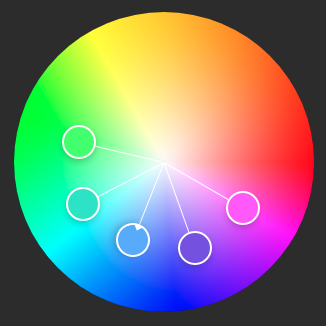
On Coco we needed a way to take a the work we'd done on a hundred or so garments and turn them into thousands. But we needed something slightly more sophisticated than just doing a hue shift.
For each garment we had a specified color (one picked by the shading art director) and the actual shaded color. For each desired variant we were also given a variant color. The first step in re-targeting the color was to calculate a set of coordinated colors based on the given variant color. We used something like adobe's color wheel. to find a set of coordinated colors. Essentially we could "guarantee" colors that look good together and we could eliminate colors that we never wanted to see, like Hooker's Green, which our production designer didn't ever want.
Next, we would compare the shaded color and the specified color. Where they were similar we would choose the given variant color. Where they were different we would use the difference to pick one of the other coordinated colors calculated earlier.
If there wasn't much saturation in the shaded color (dealing with a dark gray or white), we would try to compliment whatever was happening in the original shading. For example, if the specified color was a dark purple and the shaded color at given point was white (white embroidered flower on a purple blouse) and the variant color was a light pink. Instead of having white flower on a light pink blouse we would shift the value of the white to something darker maintain the contrast.
We were able to get lots of variation and preserve the beautiful shading work. On other films the strategy had been to replace the original shading with flat colors, which gives you variation, but a much more bland look.
Let's talk about what I can do for you (demo reel on request).